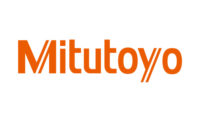A digital image is made from pixels, the smallest discrete element of a digital image. The image is expressed both in terms of the A to D conversion and in bits. It is helpful to address applications for digital imaging in the real world, where most in the nondestructive test (NDT) community spend a substantial amount of time. Moving to digital images provides cost savings and improved efficiencies.
The NDT community can find a significant opportunity in the casting business. Most manufacturers that make castings are well-intentioned; for example, they are vigilant in looking for Six Sigma in the hope that one day they will make the perfect casting.
All castings face challenges, including shrink, porosity, inclusions and voids. All of these are referred to as "discontinuities"-something other than the cast base material uniformly distributed through the casting. If they were put into two basic classifications, they would be lack of uniform material such as porosity and sponge, and a foreign material that can be of greater or lesser density. All represent an undesirable condition of the base material.
Foundry control
How does one deal with foundry control without film? The first place to look is at the process followed by a discussion about how to address various challenges. First is the study conducted by ARINC Inc. (Annapolis, MD), "Computer-ized Radiography-Investigation as a Possible Replacement for Conventional Wet Film X-ray Technique of Aircraft Structure." Conducted for the U.S. Air Force, the study concludes that some computed radiography systems are as good or better than film.When it comes to castings, low-value castings such as light alloy wheels go on to be processed and become a wheel if they are good after X-ray. Alternatively, they go to re-melt and back to the casting machine as molten metal to be recast. If they fail at X-ray, the process starts over. High-value castings are costly to re-melt; as such, they go to rework-also referred to as repair-and are drilled and welded in the area of discontinuity. The process can repeat multiple times until they are acceptable.
Next in line comes the repair work. The X-rays, together with the part, are sent to the technician at a repair station. Depending on the skill level, the dynamic ranges from those that drill or grind into problem areas, reweld and then send it to be X-rayed again. On the other end of the spectrum are those that are similar to "miners," a process at casting facilities that repairs the discontinuities in a casting. Problems then are searched for with a drill and grinder.
An extreme example of this is a high-value casting that has more than a person a year of repair effort-or more than 2,000 hours-before the process is completed. Here is where a more pragmatic solution is in order.
Using a real-time or digital X-ray system such as the foundry control inspection system, and networking the image processor to one or more other image processing stations, the image can be sent to the rework station-now known as the repair station-with annotation, dimensions and locations, and where to grind, drill and weld. The image can contain all of the repair instructions and the comments or remarks for two-way communication between the radiographer and repair personnel.
Tying it together
The process ties together in the quality department. All companies have a quality manager who, on occasion, may focus primarily on data. It has been reported that the more data you give them, the more they need. Upper management reads the charts they publish and evaluates aspects such as trend, cycle, hugging and out-of-control conditions.In implementing a filmless system the image processing system selected must have the capability to gather quality data and be on-line for the foundry manager and quality manager to see. This way, the two can have a meaningful discussion about the data.
So is all this possible? The answer is "yes." There are networkable image processing systems that are PC-based and will provide the data in real time. Some of the advantages include:
- Faster repair
- Fewer cycles
- More accurate repair
- No lost film or instructions
- Online data for all to use in the quest for Six Sigma
- The provision of real-time data for the quality department
- The provision of real-time data for the foundry manager
- The need to serve as the "in-between," or diplomat, is eliminated
- The cost of the process is reduced
System selection
Selecting the system becomes a bit more complex. There are several image-processing systems available. Most offer more functions and features than technicians can use. These are the features or functions of an image processing system that provide utility for annotation of an image to be used by a repair person to accomplish the repair of the casting. A list of essential ones include:
Annotation
- Capable of writing comments and instructions on the image
- Ability to mark the locations where repair is necessary
- An accurate measurement tool to indicate the location dimensionally to the area of repair
- Contract stretch or Window level
- Magnifications by up to 4X
- Histogram for an area of interest
- Unique image identification
- Date-time stamp
- Automatic item numbering
- Original image protection
- Operator identification
- Security log-on
- Defect classification by:
- type of defect
- operation or process
- part type
- operator
Those are all of the "should haves," but the "must-haves" are not negotiable. For example, the computer and software must be networkable. The software must allow for the sharing of images among the networked computers. The best solution is via an Ethernet network.
Replacing film and conducting fewer X-rays to repair the part results in additional savings. Additionally, users see the benefit of knowing the defects in real time and taking real-time corrective action. The reduction in repair cost is just another benefit.
This benefits those in casting, and the benefit of a real-time or digital imaging solution with digital X-ray can pay back the investment in real savings in less time than one might think.

